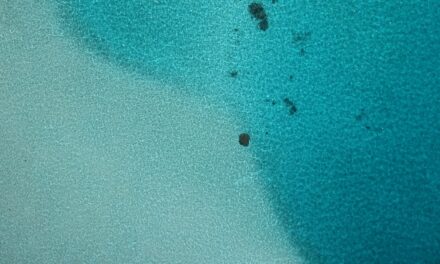Jan Both was born in 1618 in the picturesque town of Utrecht, a city renowned for its rich artistic heritage and vibrant cultural scene. Growing up in such an environment undoubtedly influenced his artistic sensibilities from a young age. The son of a painter, Both was exposed to the world of art early on, which likely ignited his passion for painting.
His formative years were spent in a milieu where creativity flourished, and he was able to witness the works of prominent artists of the time. This early exposure would later manifest in his own distinctive style, which combined elements of realism with a romanticised view of nature. Both’s formal education in the arts is somewhat obscure, but it is widely believed that he trained under the tutelage of the esteemed painter Abraham Bloemaert.
Bloemaert was known for his mastery of colour and composition, and his influence on Both’s early work is evident. The rigorous training he received would have equipped Both with a solid foundation in the techniques of painting, allowing him to develop his unique voice as an artist. As he honed his skills, Both began to explore various themes and subjects, ultimately gravitating towards landscapes and genre scenes that would define his career.
Summary
- Jan Both was born in Utrecht, Netherlands in 1618 and received his early artistic training from his father, a glass painter.
- Both was heavily influenced by the Italian landscape paintings he saw during his travels to Italy, which inspired his own landscape paintings.
- His travels to Italy and the Mediterranean region provided him with inspiration for his landscapes, and he often incorporated classical ruins and Mediterranean vegetation into his works.
- Both is best known for his landscape paintings, which often featured pastoral scenes, travellers, and shepherds, and he played a key role in popularising the genre in Dutch Golden Age art.
- Both collaborated with fellow artist Andries Both, and their joint works are highly regarded for their harmonious compositions and use of light and shadow.
Style and Influences
Jan Both’s artistic style is characterised by a harmonious blend of realism and idealism, which sets him apart from many of his contemporaries. His landscapes are imbued with a sense of serenity and balance, often featuring lush greenery, tranquil waters, and idyllic rural scenes. This approach reflects the influence of the Italianate style, which was gaining popularity during the Dutch Golden Age.
Both’s ability to capture the essence of nature while infusing it with a sense of romanticism is a hallmark of his work, making it both relatable and aspirational. The influence of other artists can also be seen in Both’s oeuvre. The works of Claude Lorrain, a French painter known for his luminous landscapes, had a profound impact on Both’s artistic development.
Lorrain’s emphasis on light and atmosphere resonated with Both, who sought to create a similar sense of depth and mood in his own paintings. Additionally, the Dutch landscape tradition, exemplified by artists such as Jacob van Ruisdael and Meindert Hobbema, played a significant role in shaping Both’s artistic vision. By synthesising these influences, Both carved out a unique niche within the landscape genre that would leave a lasting impression on future generations.
Travels and Inspirations
Jan Both’s artistic journey was marked by extensive travels that enriched his understanding of landscapes and broadened his horizons. In the 1640s, he ventured to Italy, where he immersed himself in the vibrant art scene of cities like Rome and Florence. This experience proved transformative for Both, as he encountered the works of the Italian masters firsthand.
The breathtaking vistas and dramatic landscapes of the Italian countryside captivated him, inspiring him to incorporate similar elements into his own work. During his time in Italy, Both developed a keen appreciation for the interplay of light and shadow, which became a defining characteristic of his paintings. The Italian landscape offered him new perspectives on composition and colour, allowing him to experiment with techniques that would elevate his artistry.
Upon returning to the Netherlands, Both infused his works with the lessons learned during his travels, creating landscapes that exuded both beauty and emotional resonance. His ability to synthesise these diverse influences into a cohesive style is a testament to his artistic prowess.
Landscapes and Genre Paintings
Jan Both is perhaps best known for his enchanting landscapes that capture the essence of rural life in the Dutch countryside. His paintings often depict serene scenes featuring rolling hills, meandering rivers, and quaint villages nestled amidst lush greenery. These idyllic settings evoke a sense of peace and harmony with nature, inviting viewers to escape into a world untouched by the chaos of urban life.
Both’s meticulous attention to detail and masterful use of colour contribute to the overall sense of tranquillity that permeates his work. In addition to landscapes, Both also explored genre painting, capturing everyday life in rural settings. His genre scenes often feature figures engaged in various activities, from farming to leisure pursuits, providing a glimpse into the lives of ordinary people during the Dutch Golden Age.
These works reflect Both’s keen observation skills and his ability to infuse narrative elements into his compositions. By blending landscapes with genre scenes, Both created a unique fusion that celebrated both nature and humanity, making his art relatable to a broad audience.
Collaboration with Andries Both
Jan Both’s artistic journey was further enriched by his collaboration with his brother Andries Both, who was also an accomplished painter. The two brothers worked closely together during their careers, sharing ideas and techniques that would enhance their individual styles. Their partnership allowed them to explore new themes and subjects while benefiting from each other’s strengths as artists.
This collaboration not only fostered creativity but also contributed to their mutual success in the competitive art market of the time. The synergy between Jan and Andries is evident in their works, which often feature similar motifs and stylistic elements. While Jan focused primarily on landscapes infused with romanticism, Andries tended to explore more dynamic compositions with figures prominently featured in pastoral settings.
This complementary approach allowed them to appeal to different segments of the art market while maintaining their distinct identities as artists. Their collaboration exemplifies the power of artistic partnerships in fostering innovation and creativity within the art world.
Recognition and Success
Jan Both’s talent did not go unnoticed during his lifetime; he garnered significant recognition for his contributions to Dutch art. His works were highly sought after by collectors and patrons alike, leading to numerous commissions that solidified his reputation as a leading landscape painter of the era. The combination of his technical skill and unique vision resonated with audiences, allowing him to carve out a successful career in an increasingly competitive art market.
Both’s success can also be attributed to his ability to adapt to changing tastes within the art world. As the demand for landscape paintings grew during the Dutch Golden Age, Both capitalised on this trend by producing works that appealed to contemporary sensibilities. His ability to balance realism with idealism made his paintings particularly attractive to collectors who sought both beauty and authenticity in their acquisitions.
This recognition not only elevated Both’s status as an artist but also contributed to the broader appreciation for landscape painting during this vibrant period in Dutch art history.
Impact on Dutch Golden Age Art
Jan Both played a pivotal role in shaping the landscape genre during the Dutch Golden Age, leaving an indelible mark on the trajectory of Dutch art. His innovative approach to composition and colour set new standards for landscape painting, influencing countless artists who followed in his footsteps. By blending elements of realism with an idealised vision of nature, Both elevated landscape painting from mere representation to an expressive art form that conveyed emotion and atmosphere.
Moreover, Both’s work contributed to the growing appreciation for nature as a subject worthy of artistic exploration. During this period, landscapes were increasingly viewed as reflections of national identity and cultural values. By capturing the beauty of the Dutch countryside in all its glory, Both helped foster a sense of pride in the natural world among viewers.
His legacy can be seen in the works of subsequent generations of artists who continued to explore themes of nature and landscape while building upon the foundations he laid.
Legacy and Influence on Later Artists
The influence of Jan Both extends far beyond his own lifetime; he has left an enduring legacy that continues to resonate with artists today. His innovative techniques and unique approach to landscape painting inspired numerous artists throughout history, including those from different regions and artistic movements. The romanticised portrayal of nature found in Both’s work can be seen echoed in the landscapes of later artists such as Caspar David Friedrich and John Constable, who sought to evoke similar emotional responses through their depictions of the natural world.
Both’s impact is also evident in contemporary art practices that explore themes of nature and environment. Modern artists often draw upon historical references while infusing their work with contemporary perspectives on ecological issues. In this way, Jan Both’s legacy lives on as artists continue to grapple with their relationship to nature and seek inspiration from the beauty that surrounds them.
Jan Both’s Techniques and Materials
Jan Both employed a range of techniques and materials that contributed to the distinctive quality of his paintings. He primarily worked with oil paints on canvas or wood panels, allowing him to achieve rich colours and intricate details in his landscapes. His mastery of glazing techniques enabled him to create luminous effects that captured the play of light across various surfaces—an essential aspect of his artistic vision.
In addition to traditional oil painting methods, Both often experimented with composition and perspective to create depth within his works. He employed techniques such as atmospheric perspective—where distant objects are rendered lighter and less detailed—to enhance the sense of space within his landscapes. This attention to detail not only showcased his technical prowess but also reflected his deep understanding of how light interacts with natural forms.
Jan Both’s Notable Works
Among Jan Both’s most celebrated works are “A River Landscape with Fishermen” and “A Landscape with Cattle.” These paintings exemplify his ability to capture both the beauty of nature and the simplicity of rural life.
Another notable work is “A View near Tivoli,” which showcases Both’s Italian influences through its dramatic composition and atmospheric effects.
The painting features rolling hills bathed in warm sunlight, evoking a sense of serenity that invites viewers into its idyllic setting. Such works not only highlight Both’s technical skill but also serve as enduring examples of how he successfully merged realism with idealism in landscape painting.
Jan Both’s Place in Art History
Jan Both occupies a significant position within art history as one of the foremost landscape painters of the Dutch Golden Age. His innovative approach to composition, colour, and subject matter set new standards for landscape painting during this vibrant period. By blending elements from various artistic traditions—most notably Italianate influences—Both created a unique style that resonated deeply with audiences both then and now.
His contributions extend beyond mere aesthetics; they reflect broader cultural shifts within society regarding nature’s representation in art. As artists began exploring themes related to identity, environment, and human experience through landscapes—often seen as reflections of national pride—Both’s work laid essential groundwork for these explorations. In conclusion, Jan Both’s legacy continues to inspire artists today while reminding us all about our connection with nature through art—a testament not only to his talent but also its enduring relevance across time periods!
If you are interested in exploring different techniques in art, you may also enjoy reading about how to use graphite powder for subtle shading in large areas. This article provides valuable insights into creating depth and dimension in your artwork using this versatile medium. Check it out here to enhance your artistic skills even further.



